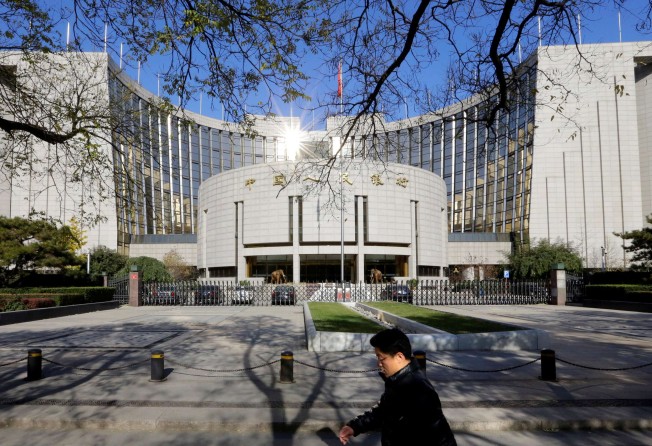China’s central bank lets yuan fall below defensive line
Pressure on currency likely to mount as Beijing tightens curbs on property speculation and the US Fed looks set to raise interest rates, analysts say

China’s central bank allowed the yuan to fall below a key defensive line on the first trading day after its inclusion as a “hard currency” in the International Monetary Fund’s basket.
The People’s Bank of China set the mid-price of the yuan against the US dollar at 6.7008 on Monday, falling below the 6.70 line it had guarded in the last few months and fanning speculation it would allow deeper depreciation with the yuan’s inclusion in the IMF’s Special Drawing Rights.
The 0.3 per cent depreciation, or 230 basis point change, from the previous trading day on September 30, could also indicate the central bank was growing more concerned about the country’s foreign exchange reserves, which fell for a third month in a row in September to a five-year low of US$3.17 trillion.
With the US Federal Reserve still likely to raise interest rates and Beijing banning investors from speculating on prime city properties, the pressure on the yuan to weaken and the urge for investors to move money abroad would only grow, analysts said.
“The yuan is set to continue weakening this year and next year,” UBS Wealth Management chief China economist Hu Yifan said. “It seems the central bank has recognised that a gradual and modest depreciation of the yuan is, temporarily, acceptable,” Hu said. “While in theory, yuan depreciation and capital flight can reinforce each other, China can cut the link by beefing up capital controls.”
Hu forecast the yuan would be traded at 6.80 to the dollar by the end of the year, breaking through another psychological barrier.
In June, Reuters reported that China could allow the yuan to fall to 6.80 to the US dollar by December, resulting in some short-term market volatility. The central bank responded with a strongly worded statement saying such reports misled markets and helped speculators to “short” the yuan.
China Merchants Bank analyst Liu Dongliang said the yuan’s fall below 6.70 would have a “relatively large psychological impact on the market and could be read as the central bank giving up its grip over the position”.
The ‘iron bottom’ [of the yuan’s value], which has been defended in the last three months, is gone, and yuan exchange rate volatility has entered a new stage
“The ‘iron bottom’ [of the yuan’s value], which has been defended in the last three months, is gone, and yuan exchange rate volatility has entered a new stage,” Liu wrote.
But he projected the central bank would step in again to defend the currency at 6.72-6.73 and if “one-way” movements became too obvious.
The biggest problem with the current policy is that the central bank controls capital outflow, but it doesn’t bring in capital inflows
Shen Minggao, chief economist of CEMB Group, a research agency affiliated with Chinese financial news publication Caixin, said the central bank would continue to struggle to defend the yuan’s value by burning through the country’s reserves.
“The biggest problem with the current policy is that the central bank controls capital outflow, but it doesn’t bring in capital inflows,” Shen said, a former Citigroup chief China economist.
Additional reporting by Wendy Wu